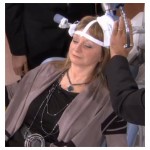TMS San Francisco
Transcranial Magnetic Stimulation
TMS is a non-invasive treatment for depression. The brain is stimulated by pulsed magnetic fields in specific focused areas that are associated with abnormally low activity in depression.
The stimulation of nerve cells by the magnetic field causes the release of neurotransmitters and has been shown to improve depression in many well designed clinical trials.
Is TMS like Electroconvulsive shock therapy?
TMS is NOT like electroconvulsive shock therapy. TMS is a non-invasive treatment and patients are awake during the entire procedure. The procedure lasts for about an hour. The coil stimulates activity in the brain without actual contact.
What are the side effects of TMS?
TMS does not cause harmful side effects. In the clinical trials, the participants revealed no structural changes in the brain and no effect on the body.
In fact, TMS is an extremely safe procedure. There is no anesthesia or sedation, and there are no reports of cognitive changes like memory impairment or difficulty concentrating. TMS is a great alternative for people who experience unpleasant side effects and few positive results from antidepressant medications.
The main side effect of TMS is minimal scalp discomfort or a stiff neck during the procedure. However, most patients find they have the ability to continue their day with regular activity right after treatment.
Now that I am interested in pursuing TMS…
What is the process?
1Step 1: First, you will set up a consultation with Dr. Forster. The purpose of this consultation is to make sure that the treatment is appropriate for you and to explain in detail the process.2Step 2: Setting the TMS parameters, Dr. Forster will meet with you for a 2-hour session. During this session, he will determine the motor threshold settings and and set the location for the magnetic pulses that is best for you. During this session, you will also receive your first treatment.
3Step 3: You will then have 1-hour treatment sessions each weekday for 6 weeks – these sessions will be administered by a trained technician under Dr. Forster’s clinical supervision. Note: If Doctor Forster may decide to reset the TMS parameters after treatment has been started, based on your response to the treatment.
4Step 4: In addition to TMS sessions, you will have weekly visits with Dr. Forster to evaluate the progress of your treatment.
Still have questions?
For more information about the TMS procedure, visit the Neuronetics website at this link.
In addition, click the link below to email Dr. Forster any further questions or concerns. Dr. Forster can provide more information for both patients and therapists about TMS.


